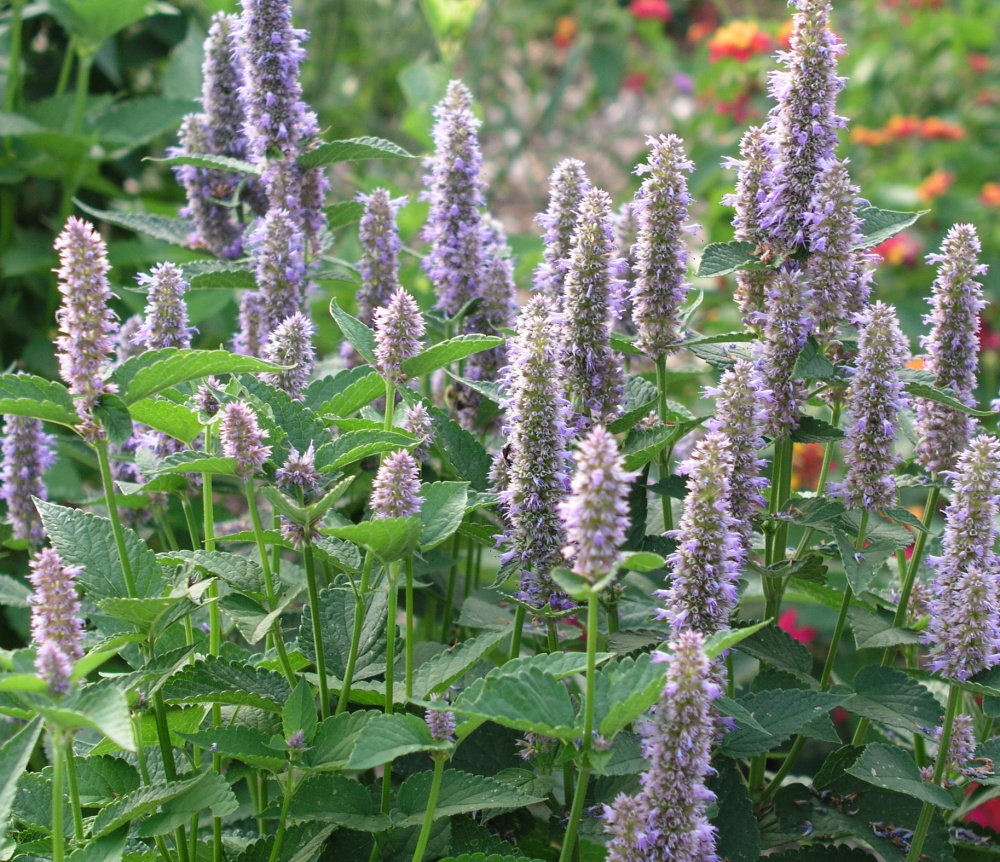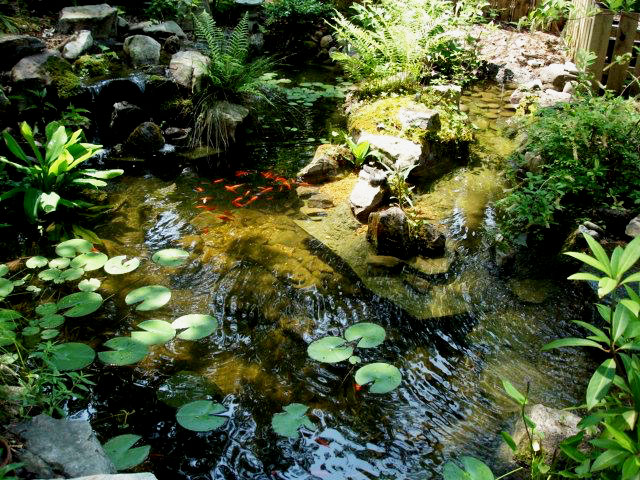Herb gardeners are well aware that bees love herbs – their flowers almost vibrate with activity as summer arrives. Lavender, thyme, rosemary, mint, oregano, borage, and bee balm are all favorites among the bees.
However, the two that seem to attract the most attention are anise hyssop (Agastache foeniculum) and African blue basil (Ocimum kilimandscharicum x basilicum). Both are carefree herbs with so many endearing characteristics for pollinators and humans alike.
Anise hyssop is a tender perennial that reaches up to four feet tall and around one to two feet wide, thriving in full sun and average, well-drained soil. With pale purple flower spikes, it's a very attractive candidate for the herb or butterfly garden. This stately plant will not only buzz with bees of all types, but moths and hummingbirds too.
Anise Hyssop, “all-star bee plant,” enhances gardens and landscapes. (Photo: Elizabeth Georges)
Historically, mass plantings of anise hyssop were established in parts of the Midwest specifically as a honey plant. Nineteenth century beekeeper accounts claimed that a single acre could provide ample forage for 100 colonies of honeybees. Besides being an all-star bee plant, the fragrant leaves make a lovely anise scented tea or syrup. The individual blossoms could even adorn a salad.
African blue basil is a sterile hybrid of an East African camphor basil and a standard garden variety called ‘Dark Opal’. It produces leaves that are rich green with deep purple venation, and long purple stems sending up spikes of delicate lavender blossoms.
Unable to produce seeds of its own, this herb is easily grown from cuttings and works great as a standalone shrub or a border plant in full to part sun. It’s considered a tender perennial and will not survive a frost. It can be overwintered inside if grown in a pot, then planted in the ground come spring.
The amount of pollinator activity on this selection makes it a benefit to any garden – from European honeybees, to native solitary bees and beneficial wasps – African blue basil is simply alive with pollinators when in bloom.
The leaves exude a musky camphor-laced flavor that may be too pungent and less appealing to those who are familiar with more traditional basil flavors. I find it flavors pesto and sauces nicely and makes a stunning addition to herbal vinegars and scented oils.
Tiny metallic green sweat bee visiting African blue basil. Photo by Elizabeth Georges. African blue basil blooms are very attractive to many native bees and beneficial wasps. (Photo: Elizabeth Georges)
As well as being beneficial for native bees and other pollinators, African blue basil and anise hyssop are very easy to grow – no special herb garden necessary. You can plant them in the existing landscape, mixed with other native wildflowers and ornamentals, or you can plant them in a pot.
Attracting wildlife, in this case our very special pollinators, takes a little extra work, but the effort is worth it when you see and hear the hum of bees, butterflies, hummingbirds, and moths visiting your herbs. Have a go and you will be amazed how much life you will attract with just a few plants.






